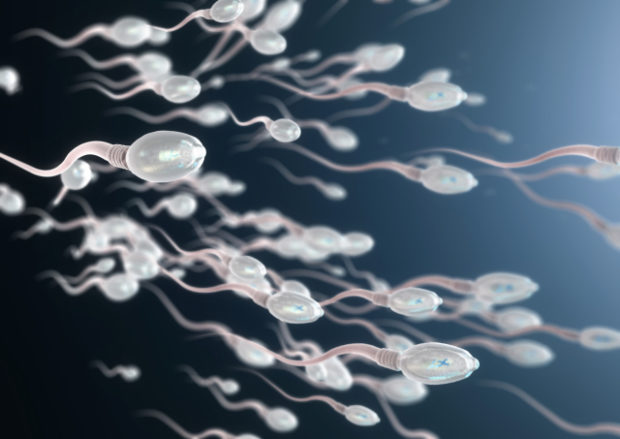
Sperm actually move with a rotation to compensate for their asymmetric movement. Image: Istock.com/man_at_mouse via AFP Relaxnews
Observations using 3D microscopy and a high-speed camera have allowed microbiologists to discover how sperm really move. The researchers’ study, published last week in the journal Science Advances, contradicts centuries of thinking about how the male gametes get around.
The equipment used in the study is state of the art: with a camera capable of filming 55,000 frames per second, the 3D microscope used by the research teams from the University of Bristol and the Universidad Nacional Autonoma de Mexico have allowed for new developments in how we understand human reproductive organs.
Asymmetric, anisotropic movement
In order to move ahead in a quick and direct fashion, sperm cannot simply rely on moving their tail. They need to perform a kind of rotation. This motion allows them to compensate for their tail, described by the researchers as asymmetric. Because the asymmetry of the tail’s movements doesn’t allow them to move in an optimal fashion, they need to move their head at the same time that the tail rotates to advance forward. Their movement can be compared to that of otters “corkscrewing through water,” rather than the swimming style of eels, which has long been the belief.
Hypothesis of symmetric motion challenged
Indeed the first scientist to observe and record his thoughts on these reproductive cells, Antonie van Leeuwenhoek in the 17th century, had used the model of the eel’s swimming style to establish a comparison. But his observation, made with one of the first-ever microscopes to be used in history, was in fact the result of an illusion created by seeing them from above with a 2D microscope.
A discovery that could lead to new advances in treating infertility
This new finding could have a real impact on men’s health, as understanding how sperm move could be helpful in diagnosing causes of male infertility as well as developing new tools to help assess the health of sperm. It’s good news for the treatment of infertility, which, the researchers note, is caused by male factors in over half the cases. RGA
RELATED STORIES:
Man stabs woman with semen-filled syringe, arrested
Men who smoke before children are conceived could affect semen quality of adult sons